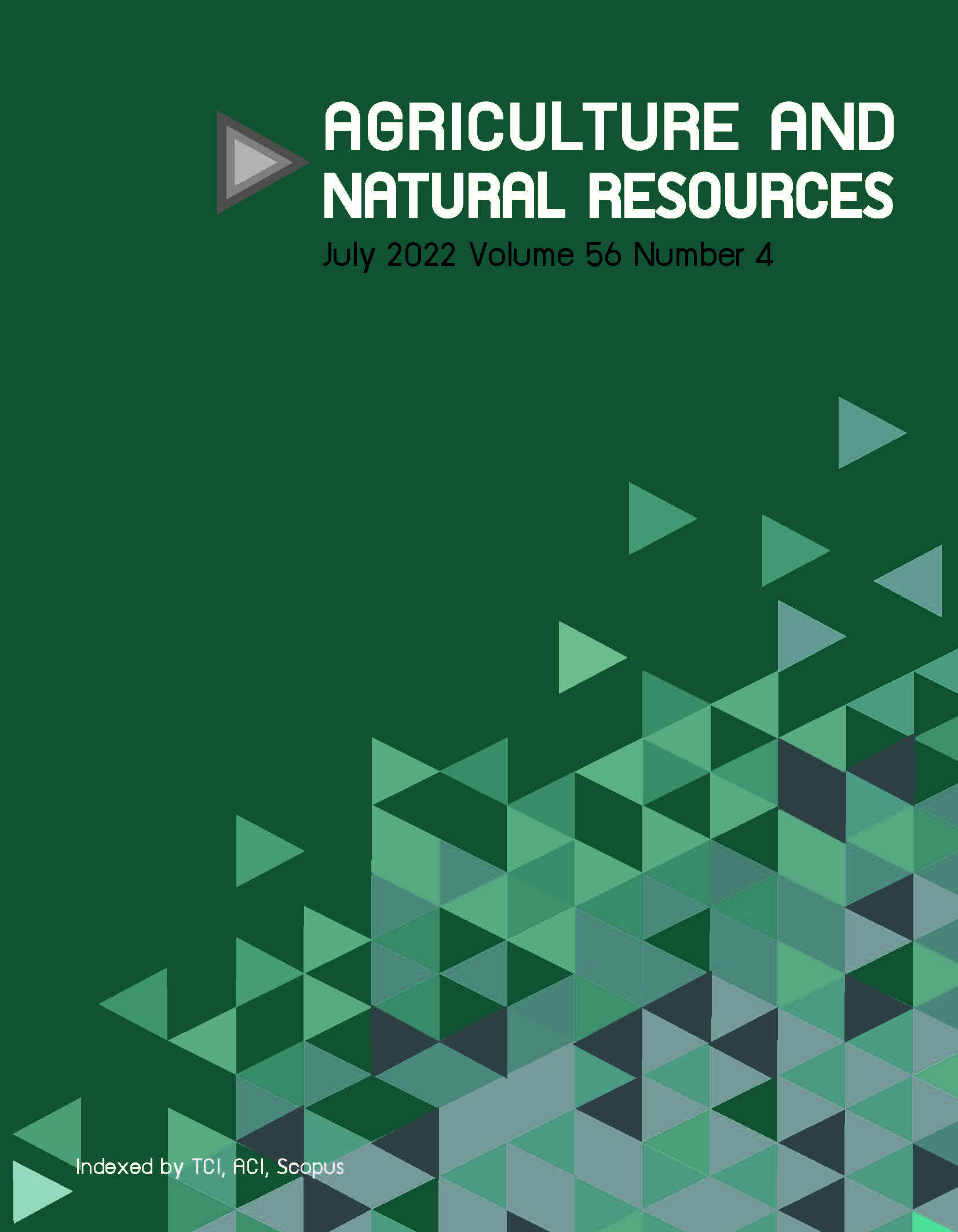Performance and population growth rate of cassava pink mealybug, Phenacoccus manihoti Matile-Ferrero (Hemiptera: Pseudococcidae) under different potassium fertilization regimes
Keywords:
Cassava, Cassava pink mealybug, Life cycle, Phenacoccus manihoti, PotassiumAbstract
Importance of the work: The application of potassium fertilizer to improve soil fertility can increase cassava yields and decrease crop damage due to pests.
Objectives: To evaluate the influence of different potassium fertilizer rates on the cassava pink mealybug, Phenacoccus manihoti Matile-Ferrero.
Materials & Method: The performance was investigated of P. manihoti feeding on potted cassava plants fertilized with three potassium fertilizer rates (0 kg K2O/ha, 90 kg K2O/ha and 180 kg K2O/ha).
Results: P. manihoti fed on the cassava plants treated with different potassium fertilizer rates had longer developmental times, shorter longevity and lower fecundity than the mealybugs on the non-potassium fertilization treatment. The mealybugs that fed on the non-fertilized plants had higher adult body size and weight than the mealybug adults in the other treatments. The mealybugs feeding on potassium-treated plants had lower net reproduction, generation time and intrinsic rate of natural increase than those values
for mealybugs in the non-potassium fertilization treatment.
Main finding: An appropriate potassium fertilizer rate should be used to minimize the damage by P. manihoti to cassava.
Downloads
Published
How to Cite
Issue
Section
License
Copyright (c) 2022 Kasetsart Universityonline 2452-316X print 2468-1458/Copyright © 2022. This is an open access article under the CC BY-NC-ND license (http://creativecommons.org/licenses/by-nc-nd/4.0/),
production and hosting by Kasetsart University of Research and Development Institute on behalf of Kasetsart University.







